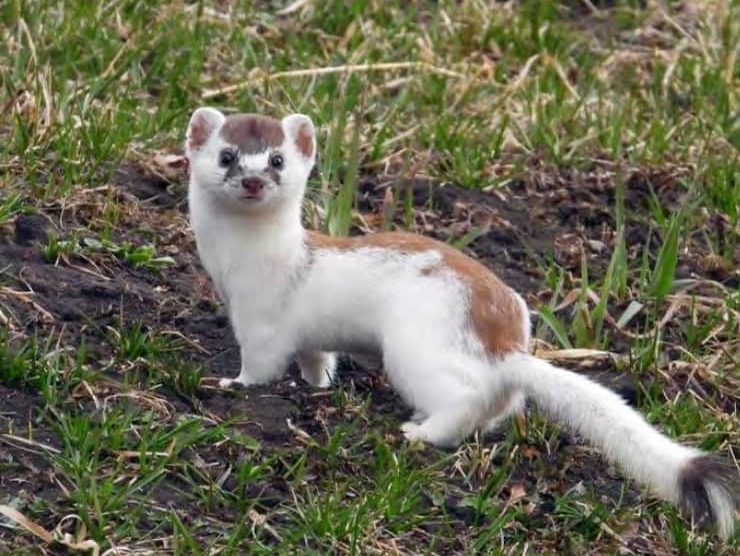After an unusually warm October, I am sometimes left baffled by the thought that winter is on its way and perhaps I really ought to get to putting on those winter tires before I’m surprised by a snowfall. Luckily for me I can look out the window and find a furry neighbour friend who is a reminder that yes, it is time to pull out those winter tires.
The long-tailed weasel does not rely on temperature to tell it to shed its brown summer coat and grow in its white winter coat. Instead, it relies on the amount of daylight decreasing to give it a cue to moult. This is of utmost importance, because the long slender body of a weasel means that it can lose heat quickly. If it was surprised by a snowfall and it was not wearing its thicker winter fur it could be in trouble. As it is, a weasel needs to consume about 40% of its body weight a day to maintain its heat. During late October and November when our hours of daylight dwindle, you can watch as the weasel’s coat turns white, starting from the belly and slowly working its way to the back and head over the course of a few weeks. Sometimes the last thing to turn is the little brown toupee.
 The long-tailed weasel is one of our most adorable neighbours; I have yet to see it while guiding a group and not have someone comment on how cute it is. Their black-tipped tails make up half or more of their body length and their rounded ears appear almost kitten like. In addition to looking beautiful, they move with a graceful bounding motion that can look almost playful. But looks can be deceiving, and the weasel is no exception.
The long-tailed weasel is one of our most adorable neighbours; I have yet to see it while guiding a group and not have someone comment on how cute it is. Their black-tipped tails make up half or more of their body length and their rounded ears appear almost kitten like. In addition to looking beautiful, they move with a graceful bounding motion that can look almost playful. But looks can be deceiving, and the weasel is no exception.
The long-tailed weasel is one of the most ferocious predators in the foothills area. True carnivores, they will consume only fresh meat or the carrion of their prey that they have stored away for later. To catch the small rodent prey, they follow scent trails and sounds until they can make a rush at their prey and kill it with a swift bite to the base of its neck. Their slender form means they can slip down burrows of ground squirrels and pocket gophers as well. Weasels are not afraid to take down prey larger than themselves, including rabbits. If a house cat were to match this feat they would have to kill a yearling deer. Given their efficiency as predators, we should be grateful that they are consuming what most people consider to be household pests.
Unfortunately, long-tailed weasels can be rather elusive, and are often active at night when people are not. However, their tracks are easily identified in the snow as few other species make a bounding pattern that looks like two small holes close together followed by more of these double holes a few centimetres away. If you do find these tracks this winter keep your eyes peeled for these white beauties using their camouflaged coats to ‘weasel’ their way out of this cold season.
Laura Griffin
Photo credits Jackie Sills


























